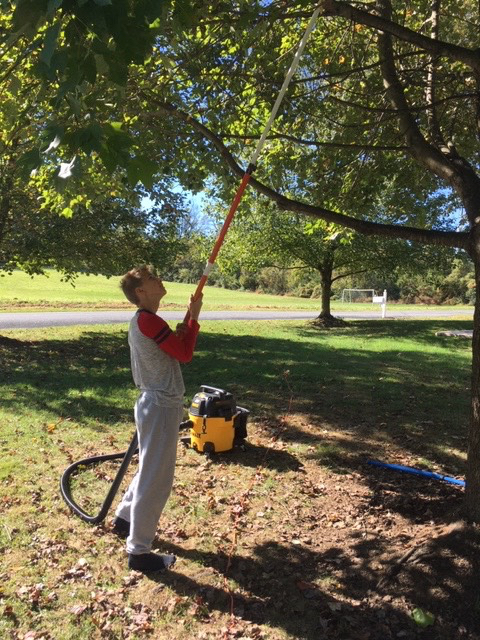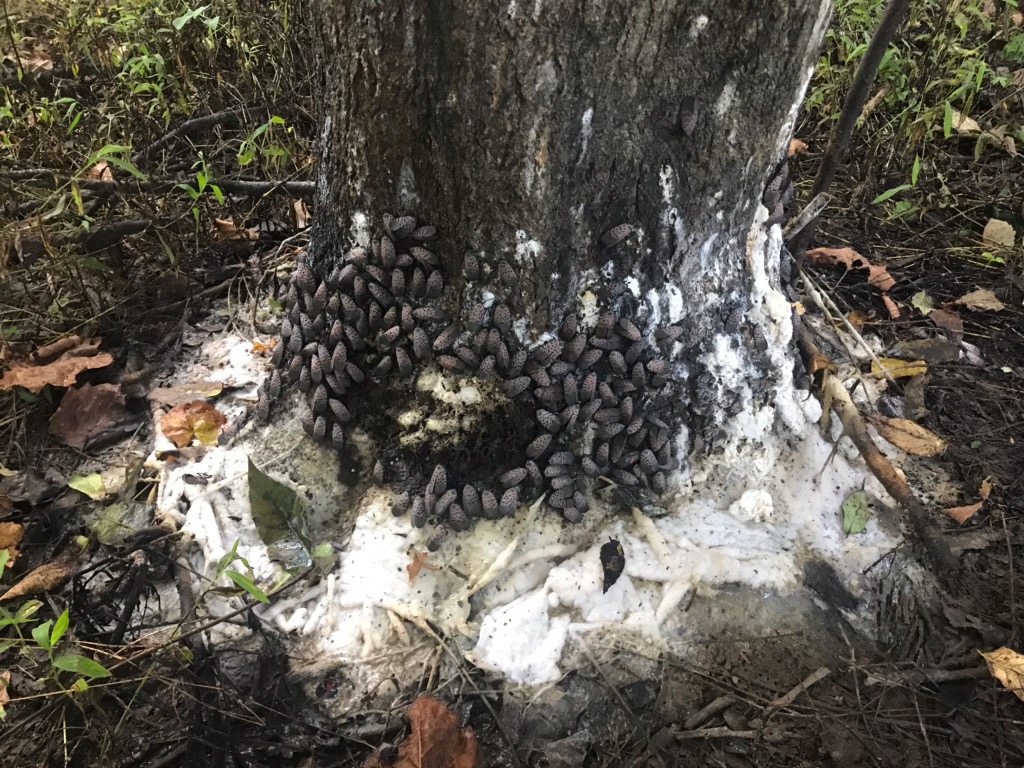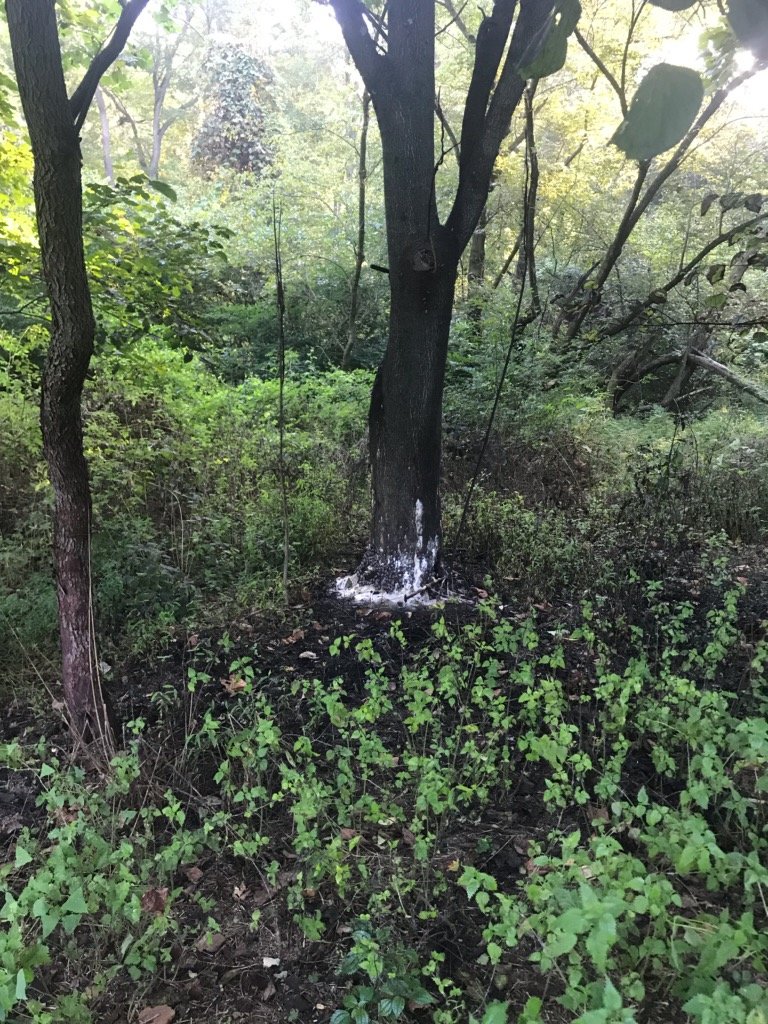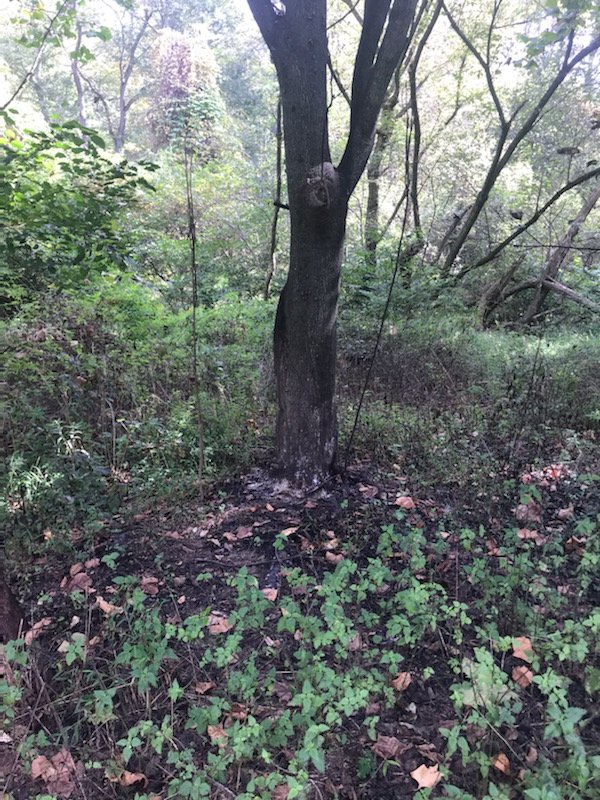Crow’s Nest: lanternfly update
By Daniel Barringer, Preserve Manager. Photos by Daniel Barringer and Erin Smith.
This summer we saw no early instars of the invasive spotted lanternfly, a big change from the high numbers we saw in 2018. (We saw adult lanternflies for the first time ever here in September, 2017.) I thought the researchers from Penn State studying lanternflies might be struggling with the low numbers of insects to observe!
As reports of lanternflies rolled in from the expanding, leading edge of the area of invasion in southeastern Pennsylvania I was beginning to think that the population density must be greatest at that front and that those of us deeper inside the area of invasion would come to have lower levels of infestation.
But suddenly in September of this year we started seeing adults in significant numbers, mainly on red maple trees as they prepared to mate and lay eggs. With the colder weather now they are slowing down, soon to die with the frost; the species overwinters as eggs. Keep in mind that we haven’t had ailanthus—thought to be their preferred host—at Crow’s Nest in years, though it does occur in the neighborhood.
The lanternflies seem to be found on trees that are stressed—or else their feeding on the sap is causing the stress. Check out the damage on this black walnut tree at Crow’s Nest (below). While I saw lots of early instars on walnut in 2018, I did not this year and don’t usually see adults in large numbers on walnut. The adults are not found on every tree in the forest; they’re concentrated on the trunks of specific individuals.

Our neighbors who had large numbers of them on their red maples developed an ingenious solution. They smushed those that they could reach but there were many more too high to reach. Insecticide is not an ideal solution, since red maples are themselves insect-pollinated and hosts to many native species of insect that are an important part of the natural food web. Similarly, sticky tape is effective with the crawling stages and even with adults—which seem to climb up trunks then fly to the ground to climb the next tree—but it is also nonselective and will catch all kinds of insects and even birds.
I was going to suggest using a stream of water to knock the lanternflies off so that they would be in reach as they began to climb again, but they came up with something better:
The neighbors adapted the hollow handle of a pole saw to connect to their shop vac, sucking them out of the higher parts of the trunk. Lanternfly adults seem to stay on the trunk, not out on the branches, so although they may be too high to reach by hand, they don’t seem to go all the way up to the upper parts of the tree, so this tool works very well for a homeowner with a bad invasion on a limited number of trees (and near an electric source). They report a record of 416 collected in one day, after which it takes a few days for the numbers to accumulate on the tree again.

Meanwhile Green Hills Preserve Manager Erin Smith has reported extremely high numbers of lanternflies there. This preserve has thousands of ailanthus trees that we have started to kill with herbicide, but there is still years of work to do on this. Check out these photos:

Above, the insects’ exudate pools at the base of the tree. That’s the sugary sap which the lanternflies have consumed and passed. Below, the same tree from a distance.

Two weeks later, the same tree. Erin returned to photograph it again and found that although the foamy sap had washed away, sooty mold (black in color) has colonized the exudate any place it dripped or pooled under the tree.

While we may not know yet the extent of damage spotted lanternflies are doing to our forests and landscapes, it is unlikely to be insignificant.
